crash
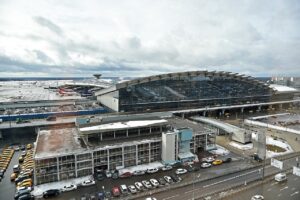 Vnukovo Airport was experiencing heavy fog on November 5, 1946. Due to the resulting low visibility conditions and a high number of aircraft bound for Moscow, including an Aeroflot LI-2 (registration CCCP-L4181) that was being ferried from Voronezh to Moscow. The LI-2, along with a number of other planes, were put in a holding pattern for 75 minutes. These things are a common practice, but maybe not for so long.
Vnukovo Airport was experiencing heavy fog on November 5, 1946. Due to the resulting low visibility conditions and a high number of aircraft bound for Moscow, including an Aeroflot LI-2 (registration CCCP-L4181) that was being ferried from Voronezh to Moscow. The LI-2, along with a number of other planes, were put in a holding pattern for 75 minutes. These things are a common practice, but maybe not for so long.
Finally, at 5:45pm, local time, the crew of the LI-2 was cleared to land and began their approach, still in a thick fog. It was a difficult approach, and the crew decided to go around. In all, five ADF approaches under radar guidance were attempted. Unfortunately, during the fifth approach the plane suffered fuel exhaustion. Immediately, the plane lost altitude and struck light poles and crashed. Fog creates very unique problems, and to complicate matters, that night three Aeroflot aircraft also crashed near Vnukovo Airport, killing a total of 19 occupants.
The first one, Aeroflot LI-2 (registration CCCP-L4181) crashed near Yamshchina, Moskovskaya, Russia. The determined cause was fuel exhaustion after being in a holding pattern for two hours, killing all five crew on board. Then, an Aeroflot C-47 (registration CCCP-L946) crashed in fog at Vnukovo Airport while attempting a go-around after being in a holding pattern for two hours, killing 13 of the 26 on board. Finally, an Aeroflot LI-2 (registration CCCP-L4207) crashed at Vnukovo Airport after repeated landing attempts due to fuel exhaustion after being in a holding pattern for 75 minutes, killing one of 26 on board.
The Vnukovo Airport is Moscow’s oldest operating airport. Originally opened for military operations during the Second World War, it became a civilian facility after the war. The Soviet government approved its construction in 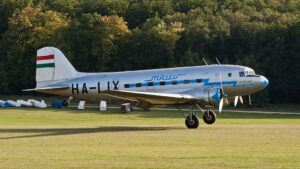 1937, because the older Khodynka Aerodrome, which was located much closer to the city center, was becoming overloaded. That airport closed by the 1980s. Vnukovo was built by several thousand inmates of Likovlag, which was a Gulag concentration camp created specifically for this purpose. Vnukovo opened on July 1, 1941. While the airport was old, it was not the cause of the November 5, 1946 crashes. More likely the pilots and flight controllers, who were preoccupied with the fog, simply forgot to monitor the fuel levels, and missed the fact that they were dangerously low. It is odd, however, that three were missed at the same time, and very sad that 19 people lost their lives because of it.
1937, because the older Khodynka Aerodrome, which was located much closer to the city center, was becoming overloaded. That airport closed by the 1980s. Vnukovo was built by several thousand inmates of Likovlag, which was a Gulag concentration camp created specifically for this purpose. Vnukovo opened on July 1, 1941. While the airport was old, it was not the cause of the November 5, 1946 crashes. More likely the pilots and flight controllers, who were preoccupied with the fog, simply forgot to monitor the fuel levels, and missed the fact that they were dangerously low. It is odd, however, that three were missed at the same time, and very sad that 19 people lost their lives because of it.

 High up in the Big Horn Mountains, about 23 miles from Buffalo, Wyoming, rest the remains of a B-17F-55-DL Flying Fortress, serial number 42-3399, nicknamed “Scharazad.” The highest peak in the Big Horn Range is Cloud Peak, at an elevation of 12,840 feet. After the crash of the bomber, the next peak over, the one on which the bomber rests was renamed Bomber Mountain. The plane is still there today, but the bodies of the crew, William R Ronaghan (pilot), Anthony J Tilotta (co-pilot), Leonard H Phillips (navigator), Charles H Suppes (bombardier), James A Hinds (aircraft engineer), Ferguson T Bell Jr (radio operator), Lee ‘Vaughn’ Miller (assistant aircraft engineer), Charles E Newburn Jr (assistant radio operator), Jake F Penick (aircraft gunner), Lewis M Shepard (assistant aircraft gunner), were recovered from the crash site and given a proper burial.
High up in the Big Horn Mountains, about 23 miles from Buffalo, Wyoming, rest the remains of a B-17F-55-DL Flying Fortress, serial number 42-3399, nicknamed “Scharazad.” The highest peak in the Big Horn Range is Cloud Peak, at an elevation of 12,840 feet. After the crash of the bomber, the next peak over, the one on which the bomber rests was renamed Bomber Mountain. The plane is still there today, but the bodies of the crew, William R Ronaghan (pilot), Anthony J Tilotta (co-pilot), Leonard H Phillips (navigator), Charles H Suppes (bombardier), James A Hinds (aircraft engineer), Ferguson T Bell Jr (radio operator), Lee ‘Vaughn’ Miller (assistant aircraft engineer), Charles E Newburn Jr (assistant radio operator), Jake F Penick (aircraft gunner), Lewis M Shepard (assistant aircraft gunner), were recovered from the crash site and given a proper burial.
On June 28, 1943, the B-17F “Scharazad” left Pendleton, Oregon to join a bomber group headed to Europe during World War II. Around midnight, Captain Ronaghan radioed that their position was near Powder River, Wyoming. That was the last transmission, and they were never heard from again. The Army launched multiple search campaigns to find the missing plane among the mountains, but modern search aids like GPS were not available until the 1960s, and planes can be difficult to find in mountainous terrain anyway, due to trees and grasses blending with the green tones of the plane.
It would take two long years for the families of these fallen men to have closure, and it came by chance, really. On August 12, 1945, two cowboys spotted the shiny aluminum from the wreckage and discovered all ten crew members deceased. For two years the paint color had allowed the plane to be hidden on the mountain, but as 
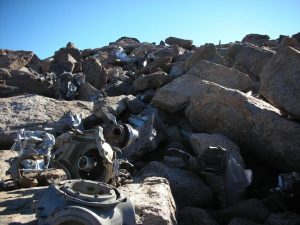 time, and the elements, went on, the paint wore off, and the shining aluminum allowed the plane to be located. The mountain was named “Bomber Mountain” in their memory. I can’t imagine the pain of loss the families of the crew must have felt knowing that their loved one had died, but to have no real idea what happened for two long years…must have been very hard to bear. Knowing where it all happened, while not removing the pain, at least brings peace.
time, and the elements, went on, the paint wore off, and the shining aluminum allowed the plane to be located. The mountain was named “Bomber Mountain” in their memory. I can’t imagine the pain of loss the families of the crew must have felt knowing that their loved one had died, but to have no real idea what happened for two long years…must have been very hard to bear. Knowing where it all happened, while not removing the pain, at least brings peace.
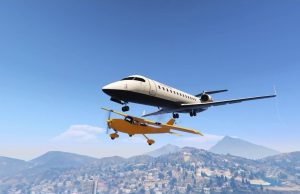 Just like cars, planes have blind spots too. It makes sense, and in reality, the blind spots on planes make the blind spots in cars seem so much less significant. It makes no difference really, because during a crash the result is catastrophic. Of course, there is a better chance, in a collision, to survive in a car than a plane. Of course, it depends on how bad the crash was and where, as to what chances there are of survival in car or plane.
Just like cars, planes have blind spots too. It makes sense, and in reality, the blind spots on planes make the blind spots in cars seem so much less significant. It makes no difference really, because during a crash the result is catastrophic. Of course, there is a better chance, in a collision, to survive in a car than a plane. Of course, it depends on how bad the crash was and where, as to what chances there are of survival in car or plane.
On Monday, September 25, 1978, Pacific Southwest Airlines (PSA) Flight 182 departed Sacramento for San Diego, with a stop in Los Angeles. Flight 182 was a Boeing 727-214 commercial airliner, registration, N533PS. The seven-person, San Diego-based crew consisted of Captain James McFeron, who was 42; First Officer Robert Fox, who was 38; Flight Engineer Martin Wahne, who was 44; and four flight attendants. The flight from Sacramento to Los Angeles went smoothly. At 8:34am, Flight 182 departed Los Angeles. First Officer Fox was the pilot flying. There were 128 passengers on board, including 29 PSA employees. The weather in San Diego that morning was sunny and clear with 10 miles of visibility. It was an ideal day to fly.
At 8:59 a.m., the approach controller alerted the PSA crew about a small Cessna 172 Skyhawk aircraft nearby.  The Cessna was being flown by two licensed pilots. One was Martin Kazy Jr, who was 32. He possessed single-engine, multi-engine, and instrument flight ratings, as well as a commercial certificate and an instrument flight instructor certificate. He had flown a total of 5,137 hours. The other, David Boswell, who was 35. He was a US Marine Corps Sergeant. He possessed single-engine and multi-engine ratings and a commercial certificate. Boswell had flown 407 hours at the time of the accident. He was practicing under Kazy, intent on achieving his instrument rating.
The Cessna was being flown by two licensed pilots. One was Martin Kazy Jr, who was 32. He possessed single-engine, multi-engine, and instrument flight ratings, as well as a commercial certificate and an instrument flight instructor certificate. He had flown a total of 5,137 hours. The other, David Boswell, who was 35. He was a US Marine Corps Sergeant. He possessed single-engine and multi-engine ratings and a commercial certificate. Boswell had flown 407 hours at the time of the accident. He was practicing under Kazy, intent on achieving his instrument rating.
The men in the Cessna had departed from Montgomery Field and were navigating under visual flight rules, which did not require the filing of a flight plan. As is common while learning instrument flying, Boswell was wearing a “hood” to limit his field of vision straight ahead to the cockpit panel, much like an oversized sun visor with vertical panels to block peripheral vision. At the time of the collision, the Cessna 172 light aircraft, registration, N7711G was on the missed approach (in visual meteorological conditions) from Lindbergh’s Runway 9, heading east and climbing. The Cessna was in communication with San Diego approach control. The Cessna came up from below the Boeing 727. The PSA plane failed to keep track of the Cessna, or report losing sight of it when it moved into the blind spot. It was a recipe for disaster. The larger plane virtually ran over the  smaller plane over San Diego, California, at 9:01am.
smaller plane over San Diego, California, at 9:01am.
Both aircraft crashed into North Park, a San Diego neighborhood. Flight 182hit a house, and impacted the ground just north of the intersection of Dwight and Nile, killing all 135 people aboard the aircraft and seven people on the ground in houses, including two children. The Cessna impacted on Polk Av between 32nd St and Iowa St killing the two on board. Nine others on the ground were injured and 22 homes were destroyed or damaged by the impact and debris. It was Pacific Southwest Airlines’ first fatal accident.
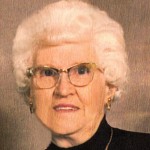
 On July 19, 1989, in the skies over Alta, Iowa, United Airlines Flight 232, on which my great aunt, Gladys Cooper was a passenger, began the fateful journey to a catastrophic end. At 3:16pm, the rear engine’s fan disk broke apart due to a previously undetected metallurgical defect located in a critical area of the titanium-alloy. Basically that meant that the fan disk shattered, sending shrapnel through the hydraulic lines of all three independent hydraulic systems on board the aircraft. This horrific event caused the rapid loss of all the hydraulic fluid. The subsequent catastrophic disintegration of the disk had resulted in a spray of debris with energy levels that exceeded the level of protection provided by design features of the hydraulic systems that operate the DC-10’s flight controls. The flight crew lost its ability to operate nearly all of them. In the resulting crash landing, the right wing just tapped the runway, causing the plane to cartwheel and break apart as it went careening down the runway and into a corn field. While my Great Aunt Gladys was killed in the crash, the skill of the pilot and flight crew saved 185 lives, including their own.
On July 19, 1989, in the skies over Alta, Iowa, United Airlines Flight 232, on which my great aunt, Gladys Cooper was a passenger, began the fateful journey to a catastrophic end. At 3:16pm, the rear engine’s fan disk broke apart due to a previously undetected metallurgical defect located in a critical area of the titanium-alloy. Basically that meant that the fan disk shattered, sending shrapnel through the hydraulic lines of all three independent hydraulic systems on board the aircraft. This horrific event caused the rapid loss of all the hydraulic fluid. The subsequent catastrophic disintegration of the disk had resulted in a spray of debris with energy levels that exceeded the level of protection provided by design features of the hydraulic systems that operate the DC-10’s flight controls. The flight crew lost its ability to operate nearly all of them. In the resulting crash landing, the right wing just tapped the runway, causing the plane to cartwheel and break apart as it went careening down the runway and into a corn field. While my Great Aunt Gladys was killed in the crash, the skill of the pilot and flight crew saved 185 lives, including their own.
While listening to an audio book about World War II, and what happens when bombers flew through flak (Fl(ieger)a(bwehr)k(anone)). I knew that on at least one occasion, my dad, Allen Spencer, a Flight Engineer and Top Turret Gunner on a B-17 in World War II, was tasked with the job of cranking down the landing gear for landing. I don’t know what I had been thinking happened to the landing gear, maybe a close bit of flak the bent something in the gear perhaps, but what had not occurred to me was a catastrophic hit of that flak, causing all hydraulics to be lost. Nevertheless, quite likely that is what happened. It was one of the scenarios discussed in the book. As the hydraulics were lost, the red fluid was all over the floor of the aircraft, and the next thing that was required was to crank down the landing gear, because the gear could not be lowered without hydraulic fluid. Somehow, Dad’s precarious position of hanging out in the open bomb bay doors seemed like such a simple solution to the problem, albeit a heroic act, but the loss of hydraulics could have meant death to the crew. Getting the landing gear down was only part of the problem. What about the flaps, brakes, and such. These planes were in a really bad way.
Of course, my dad’s plane did land safely, given that he became my dad, but years later, when my mother, Collene Spencer’s Aunt Gladys was on a plane crippled by the loss of all hydraulics, I now realize…finally, that when my dad heard about what happened with Flight 232, as we all eventually did, he understood full well, 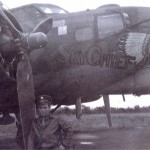
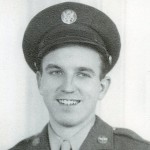 what the flight crew had been faced with. Something I only understood from the view of a spectator…for lack of a better word. He had been there. The Flight 232 situation quite likely took my dad back some 45 years to that day when he had to crank down the landing gear on a B-17 Bomber that had been damaged by flak, probably spilling hydraulic fluid all over the floor where the crew was standing. The experience must have been awful to go through, and the thought of what happened to Flight 232, almost as bad. And yet, in typical World War II veteran style, Dad said nothing, but rather set about comforting his family over the loss.
what the flight crew had been faced with. Something I only understood from the view of a spectator…for lack of a better word. He had been there. The Flight 232 situation quite likely took my dad back some 45 years to that day when he had to crank down the landing gear on a B-17 Bomber that had been damaged by flak, probably spilling hydraulic fluid all over the floor where the crew was standing. The experience must have been awful to go through, and the thought of what happened to Flight 232, almost as bad. And yet, in typical World War II veteran style, Dad said nothing, but rather set about comforting his family over the loss.
 Years ago, my mom, Collene Spencer told me about witnessing a plane crash as a little girl. I wish I had thought to get more information from her then, but at the time, all I could think of was the vision of the crash she told me about, and specifically the airplane in a corkscrew nosedive toward the ground. She said she didn’t hear any engine sounds, and she thought the plane was a piece of paper at first, but then she realized that it was a plane. I didn’t think to ask where she was at the time…whether she was at home or if the family was rock hunting or something. I wish I had asked more questions, back when I had the chance to do so.
Years ago, my mom, Collene Spencer told me about witnessing a plane crash as a little girl. I wish I had thought to get more information from her then, but at the time, all I could think of was the vision of the crash she told me about, and specifically the airplane in a corkscrew nosedive toward the ground. She said she didn’t hear any engine sounds, and she thought the plane was a piece of paper at first, but then she realized that it was a plane. I didn’t think to ask where she was at the time…whether she was at home or if the family was rock hunting or something. I wish I had asked more questions, back when I had the chance to do so.
Rather than asking questions, I began to try to research plane crashes in the area over the years of my mom’s childhood. I had expected it to be an easy search, given all the information on crashes that is out there these days. I was wrong, and by the time I decided that I needed more information from my mom, she was gone. I tried asking my aunts about the crash, but they did not remember it. It’s possible that they didn’t see it, and so they were unable to help me with it.
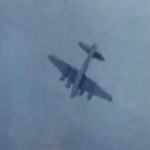
After much research, I have found possibly the only plane crash my mother could have seen at the age she would have had to be…provided she was close to her childhood home when she witnessed the crash. The crash would have been a B-17 bomber on a training maneuver 25 miles north of Casper, Wyoming. The biggest problem with this crash is the 25 mile distance from Casper, but looking north from Casper, you can see a very long way, provided you are near the events center, which could have been a possibility back then. The distance could also explain the lack of engine noise, if the engines were still working as the plane was going down, which is unlikely.
The plane, which crashed on March 3, 1944 was carrying three officers and five enlisted men. There were no survivors in the crash, which is in line with what my mother told me about the crash. The bomber was on a combat training flight, according to Lieutenant Colonel Marcus A. Mullen, station commandant, who said that  the cause of the crash was not yet determined but that a board of officers had been named to investigate. The dead were later identified as Captain Charles W. Bley of Berkeley, California, Second Lieutenant Eugene E. Ravera of Newton, New Jersey, Second Lieutenant John A. Williams of Morristown, Tennessee, Staff Sergeant Carl E. Cleveland of Sunbury, Ohio, Sergeant George P. Peterson of Perry, Ohio, Sergeant Vernon E. Arne, Stewart, Illinois, Sergeant Duane T. Zefah of Cushing, Minnesota, and Corporal Elmer L. Walters of Pawpaw, Illinois. I can’t say, for sure, that this was the plane crash my mom saw when she was a little girl, but it is noteworthy, and so worth telling about. I know that the crash was something that my mom never forgot, even though she would have only been eight years old at the time.
the cause of the crash was not yet determined but that a board of officers had been named to investigate. The dead were later identified as Captain Charles W. Bley of Berkeley, California, Second Lieutenant Eugene E. Ravera of Newton, New Jersey, Second Lieutenant John A. Williams of Morristown, Tennessee, Staff Sergeant Carl E. Cleveland of Sunbury, Ohio, Sergeant George P. Peterson of Perry, Ohio, Sergeant Vernon E. Arne, Stewart, Illinois, Sergeant Duane T. Zefah of Cushing, Minnesota, and Corporal Elmer L. Walters of Pawpaw, Illinois. I can’t say, for sure, that this was the plane crash my mom saw when she was a little girl, but it is noteworthy, and so worth telling about. I know that the crash was something that my mom never forgot, even though she would have only been eight years old at the time.
 Most airplane malfunctions leave the captain and flight crew able to at least attempt a somewhat controlled crash landing, but that was not the case with USAir Flight 427. One minute, everything was going perfectly, and the next, the plane had flipped over and was plummeting toward the ground, nose first. The pilot, Captain Peter Germano had been sipping a cranberry-orange juice and Diet Sprite drink 10 minutes before the crash, and then gave the cabin a standard weather report for Pittsburgh less than three minutes before the plane went down. It was a smooth flight all the way, and there were no anticipated problems.
Most airplane malfunctions leave the captain and flight crew able to at least attempt a somewhat controlled crash landing, but that was not the case with USAir Flight 427. One minute, everything was going perfectly, and the next, the plane had flipped over and was plummeting toward the ground, nose first. The pilot, Captain Peter Germano had been sipping a cranberry-orange juice and Diet Sprite drink 10 minutes before the crash, and then gave the cabin a standard weather report for Pittsburgh less than three minutes before the plane went down. It was a smooth flight all the way, and there were no anticipated problems.
The pilots had no warning. Just 28 seconds before the crash, the pilots’ desperate exclamations are heard as the wings begin to shake and cockpit alarms sound. Germano says, “Sheez,” on the heels of three electrical clicks just before 7:03pm The Boeing 737-300 rolled to the left and dives. Germano breathes heavily and says, “Whoa,” as a thump and some clicking is heard. Another click is heard and Germano says, “Hang on.” The captain screamed and the co-pilot said, “God . . . no!” as a USAir jet spun out of control and dove about a mile nose first to the ground, killing all 132 people aboard. The flight had been completely normal until the last 28 seconds. There was no time to fix anything, and they didn’t know what to fix anyway.
“There is no indication that there was a criminal act involved in the crash,” one of the investigators said. There  was no explosion. They began to look at things like turbulence on the Boeing 737-300…to whether the pilots had been properly trained to recover from trouble in the air. Among the areas of the plane to be examined was the possibility of a rudder malfunction. USAir has warned pilots of its Boeing 737s to watch out for spontaneous rudder movements during flights. The rudder is a large vertical tail slab that moves a plane left or right.
was no explosion. They began to look at things like turbulence on the Boeing 737-300…to whether the pilots had been properly trained to recover from trouble in the air. Among the areas of the plane to be examined was the possibility of a rudder malfunction. USAir has warned pilots of its Boeing 737s to watch out for spontaneous rudder movements during flights. The rudder is a large vertical tail slab that moves a plane left or right.
After USAir Flight 427, a Boeing 737-300, crashed outside Pittsburgh on September 8, 1994, Boeing claimed the crash, which killed all 132 people on board, was caused by pilot error. The pilots’ union claimed the Boeing 737 was defective. A series of clues unearthed through meticulous detective work pointed to a problem in that prior Flight 427’s power control unit, which is a hydraulic device that controls the movement of the rudder. Investigators zeroed in on a suspicious servo valve in the power control unit. One of the manufacturers recalled a failed test, in which, for a second or two the valve stuck. The test was called thermal shock, and involved injecting hot hydraulic fluid into a valve that had been frozen to -40° to simulate the temperature in flight to the worst case scenario. At one point, the test failed, and then after the valve was adjusted, it passed. With the valve-in-a-valve system in the 737, it was expected that if the outer vale failed, the inner valve would compensate for the failure by injecting more fluid to bring the rudder back to the neutral position.
But as an analyst named Kitka studied the squiggly lines for the return flow now, he saw dips that were not 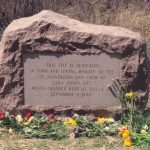 supposed to be there. When he matched them to another graph showing the force on the levers inside the PCU, he made an alarming discovery. When the outer valve had jammed, the inner valve had moved too far to compensate. That meant the rudder would not have returned to neutral, the way it was supposed to. The rudder would have reversed. That could be catastrophic, and in fact, it was. A pilot would push on the left pedal, expecting the rudder to go left, but it would go right, causing the plane to flip over and nosedive into the ground in a matter of seconds, with no possible fix on the part of the pilot and crew. There simply wasn’t enough time to fix the problem, and no way to do so anyway. Of course, the planes were grounded until they were fixed, but for the passengers and crew of USAir Flight 427, it was too late.
supposed to be there. When he matched them to another graph showing the force on the levers inside the PCU, he made an alarming discovery. When the outer valve had jammed, the inner valve had moved too far to compensate. That meant the rudder would not have returned to neutral, the way it was supposed to. The rudder would have reversed. That could be catastrophic, and in fact, it was. A pilot would push on the left pedal, expecting the rudder to go left, but it would go right, causing the plane to flip over and nosedive into the ground in a matter of seconds, with no possible fix on the part of the pilot and crew. There simply wasn’t enough time to fix the problem, and no way to do so anyway. Of course, the planes were grounded until they were fixed, but for the passengers and crew of USAir Flight 427, it was too late.
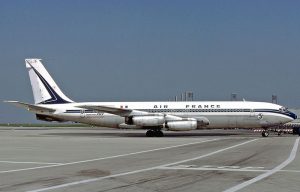 On June 22, 1962, an Air France Boeing 707 crashed on the island of Guadeloupe, killing all 113 passengers and crew members aboard. It was one of five major accidents involving Boeing 707s during that year. In all, the five crashes that year killed 457 people. Crashes happen, and unfortunately, they are not always such an unusual occurrence. Nevertheless, there was a mystery involved here. The Boeing 707 was originally a KC-135 military tanker and bomber. Boeing later decided to modify it to be used for civilian transport, and the finished product was the Boeing 707. The new design proved very popular in the commercial aviation industry. The Boeing 707 was not a fuel efficient as some of the other planes of that era, but it was faster than any other commercial jet at that time, so it made up for the fuel problem with its greater speed.
On June 22, 1962, an Air France Boeing 707 crashed on the island of Guadeloupe, killing all 113 passengers and crew members aboard. It was one of five major accidents involving Boeing 707s during that year. In all, the five crashes that year killed 457 people. Crashes happen, and unfortunately, they are not always such an unusual occurrence. Nevertheless, there was a mystery involved here. The Boeing 707 was originally a KC-135 military tanker and bomber. Boeing later decided to modify it to be used for civilian transport, and the finished product was the Boeing 707. The new design proved very popular in the commercial aviation industry. The Boeing 707 was not a fuel efficient as some of the other planes of that era, but it was faster than any other commercial jet at that time, so it made up for the fuel problem with its greater speed.
The airport on the island of Guadeloupe is located in a valley that is surrounded by mountains. Guadeloupe is a part of the French West Indies,located in the Caribbean. This particular airport is not the pilots favorite, because it requires them to make a steep descent just prior to landing. Any problem that occurs in the descent, is very hard to correct, because there is just no time. On June 22, the Air France flight failed to descend correctly and crashed directly into a peak call Dos D’Ane, or the Donkey’s Back. The plane exploded in a fireball; there were no survivors. The flight occurred before the black box flight recorder was invented, so no sure reason for the crash was ever officially found.
This crash was the third deadly crash of a Boeing 707 in a month, so something had to be done. On May 22nd, 45 people died when a plane went down in Missouri and on June 3rd, another Air France 707 crashed in Paris killing 130 people. No evidence was ever found that connected the accidents. It is believed that the weather played a part in the June 22, 1962 crash. The weather was poor in Guadeloupe that day. A violent thunderstorm was in the area, with a low cloud ceiling. Adding to the problem, the VOR navigational beacon 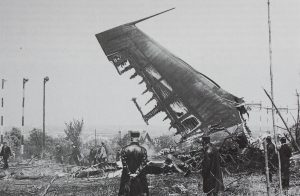 was out of service. The crew reported themselves over the non-directional beacon (NDB) at 5,000 feet and turned east to begin the final approach. That was the last time that anything was “normal” with the flight. Due to incorrect automatic direction finder (ADF) readings caused by the thunderstorm, the plane strayed 9.3 mile west from the procedural let-down track. Moments later, the plane crashed in a forest on the hill called Dos D’Ane, at about 1,400 feet and then exploded. There were no survivors. Among the dead was French Guianan politician and war hero Justin Catayée and poet and black-consciousness activist Paul Niger. While weather played a significant part in the crash, it was not the only cause.
was out of service. The crew reported themselves over the non-directional beacon (NDB) at 5,000 feet and turned east to begin the final approach. That was the last time that anything was “normal” with the flight. Due to incorrect automatic direction finder (ADF) readings caused by the thunderstorm, the plane strayed 9.3 mile west from the procedural let-down track. Moments later, the plane crashed in a forest on the hill called Dos D’Ane, at about 1,400 feet and then exploded. There were no survivors. Among the dead was French Guianan politician and war hero Justin Catayée and poet and black-consciousness activist Paul Niger. While weather played a significant part in the crash, it was not the only cause.
 Since people began moving around the world there was a need for mail service, but people hated to wait months to hear from their loved ones…especially if it was with bad news. There had to be a way to get he mail faster and with the invention of the airplane, in late 1903, the possibility of a new way to deliver the mail was on the horizon. It really didn’t take very long for someone to make the metal leap from driving the mail to flying the mail from place to place. Where there is a need, there must be a solution. That solution came on May 15, 1918, when the United States officially established airmail service between New York and Washington DC, using Army aircraft and pilots. Prior to this date, the Post Office Department used new transportation systems such as railroads or steamboats to transport mail. They contracted with the owners of the lines to carry the mail. There were no commercial airlines to contract with, so no one had thought about that yet, but that was about to change.
Since people began moving around the world there was a need for mail service, but people hated to wait months to hear from their loved ones…especially if it was with bad news. There had to be a way to get he mail faster and with the invention of the airplane, in late 1903, the possibility of a new way to deliver the mail was on the horizon. It really didn’t take very long for someone to make the metal leap from driving the mail to flying the mail from place to place. Where there is a need, there must be a solution. That solution came on May 15, 1918, when the United States officially established airmail service between New York and Washington DC, using Army aircraft and pilots. Prior to this date, the Post Office Department used new transportation systems such as railroads or steamboats to transport mail. They contracted with the owners of the lines to carry the mail. There were no commercial airlines to contract with, so no one had thought about that yet, but that was about to change.
Army Major Reuben H. Fleet was charged with setting up the first US airmail service, scheduled to operate beginning May 15, 1918 between Washington DC, Philadelphia, Pennsylvania, and New York City. The army pilots chosen to fly that day were Lieutenants Howard Culver, Torrey Webb, Walter Miller and Stephen Bonsal, all chosen by Major Fleet, and Lieutenants James Edgerton and George Boyle, both chosen by postal officials. Edgerton and Boyle had only recently graduated from the flight school at Ellington Field, Texas and neither had more than 60 hours of piloting time. While I’m sure they were a bit nervous, I’m also sure they were excited to be standing on the threshold of history.
The project got off to a bit of an embarrassingly rocky start, when Lieutenant Boyle, who was engaged to the daughter of Interstate Commerce Commissioner Charles McChord, was selected to pilot the first plane out of Washington DC that day. After all his preparations, Boyle hopped into his plane and was unable to start it. The plane had not been fueled. I’m sure that added a bit of nervousness to the situation. Nevertheless, he finally got his Curtiss Jenny, loaded with 124 pounds of airmail, into the air and made his way to Washington DC. His assignment was to fly to Philadelphia, the mid-way stop between the Washington and New York ends of the service. He did not make it there that day. The novice pilot got lost and low on gas, crash landed in rural Maryland, less than 25 miles away from Washington.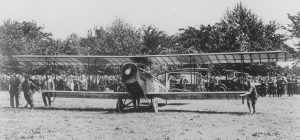
Fortunately for the service, the other flights operated as scheduled that day. Thanks to his political connections, Lieutenant Boyle was given a second chance to fly the airmail out of Washington DC. This time, he was given an escort who flew him out of the city, having given him directions to “follow the Chesapeake Bay” towards Philadelphia. Unfortunately, Boyle followed those instructions too literally, following the curve of the bay over to Maryland’s eastern shore, where he landed, out of fuel again. Not even Boyle’s connections could help him now, and he was removed from the pilots list for the service. I’m sure that didn’t help his standing with his future father-in-law either.
The other rookie pilot, Lieutenant James Edgerton, did much better on his flights and stayed with the service. Edgerton managed to keep his plane aloft during a violent storm that struck while he was on another flight, even as the propeller was pelted by hail. He stayed with the mail service until the next year, and became the Chief of Flying Operations. Then in August, the Post Office Department took over airmail operations with airplanes and civilian pilots of its own. Captain Benjamin Lipsner was named the first superintendent of the U.S. Airmail Service.
The first flight operated by the Post Office Department took off from College Park, Maryland, on August 12, 1918. The destination was New York. Max Miller flew that historic flight. Miller flew the new Curtiss R-4 aircraft. These new planes had more powerful Liberty 400 horsepower engines. Miller was the first pilot hired by the Post Office Department. He died when his plane caught fire and crashed on September 1, 1920. The Post Office Department decided to launch pathfinding flights from New York to Chicago in September 1918. A major obstacle was the Allegheny Mountains, considered by some to be the most dangerous territory on the route. U.S. Airmail Service Superintendent Benjamin Lipsner chose two of his best pilots, Eddie Gardner and Max Miller, for these flights. Eager competitors, Gardner and Miller turned the test into a race. On September 5,  1918, the pair left New York. Miller flew in a Standard airmail plane with a 150-horsepower Hispano-Suiza engine. Gardner followed in a Curtiss R-4 with a 400-horsepower Liberty engine and was accompanied by Eddie Radel, a mechanic. As each pilot landed to refuel or make repairs, he eagerly called Lipsner in Chicago to find out where the other one was. A set of telegrams now in the National Postal Museum tracked their progress. Miller landed in Chicago first, at 6:55 p.m. on September 6. Gardner arrived the next morning, landing at 8:17 at Grant Park. Sometimes it isn’t about the size of the engine I guess. Of course, today, very few people use the postal service, not called “snail mail.” With the internet and texting we have almost instant access to our loved ones.
1918, the pair left New York. Miller flew in a Standard airmail plane with a 150-horsepower Hispano-Suiza engine. Gardner followed in a Curtiss R-4 with a 400-horsepower Liberty engine and was accompanied by Eddie Radel, a mechanic. As each pilot landed to refuel or make repairs, he eagerly called Lipsner in Chicago to find out where the other one was. A set of telegrams now in the National Postal Museum tracked their progress. Miller landed in Chicago first, at 6:55 p.m. on September 6. Gardner arrived the next morning, landing at 8:17 at Grant Park. Sometimes it isn’t about the size of the engine I guess. Of course, today, very few people use the postal service, not called “snail mail.” With the internet and texting we have almost instant access to our loved ones.
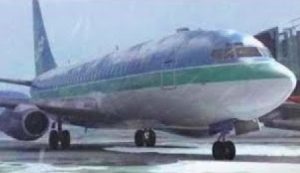 January 13, 1982 found Washington DC in the middle of a severe snowstorm. The Washington National Airport was closed due to heavy snowfall…in excess of 6.5 inches. The airport reopened at noon under barely marginal conditions, but decreasing snow. The planes that had been waiting, began the de-icing process, including an Air Florida Boeing 727. The plane had flown into Washington from Miami in the early afternoon and was supposed to return to Fort Lauderdale, Florida, after a short stop. The short layover turned into a much longer one when the airport closed. When it reopened, the plane was de-iced with chemical anti-freeze, but the planes still had difficulty moving away from the gate due to the ice, so when it eventually made it to the airport’s only usable runway, it was forced to wait 45 minutes more for clearance to take off.
January 13, 1982 found Washington DC in the middle of a severe snowstorm. The Washington National Airport was closed due to heavy snowfall…in excess of 6.5 inches. The airport reopened at noon under barely marginal conditions, but decreasing snow. The planes that had been waiting, began the de-icing process, including an Air Florida Boeing 727. The plane had flown into Washington from Miami in the early afternoon and was supposed to return to Fort Lauderdale, Florida, after a short stop. The short layover turned into a much longer one when the airport closed. When it reopened, the plane was de-iced with chemical anti-freeze, but the planes still had difficulty moving away from the gate due to the ice, so when it eventually made it to the airport’s only usable runway, it was forced to wait 45 minutes more for clearance to take off.
Not wanting to further delay the flight, the pilot, Larry Wheaton, did not return to the terminal for more de-icing, and worse, failed to turn on the plane’s own de-icing system. In fact, the pilot and co-pilot actually discussed the situation, and the co-pilot said “It’s a losing battle trying to de-ice these things. It gives you a false sense of security, that’s all it does.” During the delay, however, ice was accumulating on the wings, and 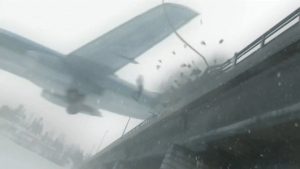 by the time the plane reached the end of the runway, it was able to achieve only a few hundred feet of altitude.
by the time the plane reached the end of the runway, it was able to achieve only a few hundred feet of altitude.
The Air Florida flight took off from Washington National Airport in Arlington, Virginia, with 74 passengers and 5 crew members on board. Thirty seconds later, the plane crashed into the 14th Street Bridge over the Potomac River, less than a mile away from the runway. Seven vehicles traveling on the bridge were struck by the 727 and the plane fell into the freezing water. It was later determined that 73 of the people on board the plane died from the impact, leaving only six survivors in the river. In addition, four motorists, who had been on the bridge, died in the crash. Terrible traffic in Washington that day made it almost impossible for rescue workers to reach the scene. Witnesses didn’t know what to do to assist the survivors who were stuck in the freezing river. Finally, a police helicopter arrived and began assisting the survivors in a very risky operation.
Two people in particular emerged as heroes during the rescue…Arland Williams and Lenny Skutnik. Known as 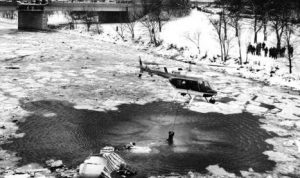 the “sixth passenger,” Williams survived the crash, and passed lifelines on to others rather than take one for himself. He ended up being the only plane passenger to die from drowning. When one of the survivors to whom Williams had passed a lifeline was unable to hold on to it, Skutnik, who was watching the unfolding tragedy, jumped into the water and swam to rescue her. Both Skutnik and Williams, along with bystander Roger Olian, received the Coast Guard Gold Lifesaving Medal. The bridge was later renamed the Arland D. Williams Jr. Memorial Bridge. It was a completely preventable tragedy, and all because they got in a hurry.
the “sixth passenger,” Williams survived the crash, and passed lifelines on to others rather than take one for himself. He ended up being the only plane passenger to die from drowning. When one of the survivors to whom Williams had passed a lifeline was unable to hold on to it, Skutnik, who was watching the unfolding tragedy, jumped into the water and swam to rescue her. Both Skutnik and Williams, along with bystander Roger Olian, received the Coast Guard Gold Lifesaving Medal. The bridge was later renamed the Arland D. Williams Jr. Memorial Bridge. It was a completely preventable tragedy, and all because they got in a hurry.
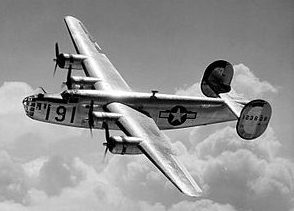
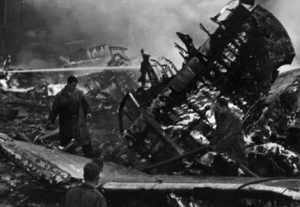 Airplane disasters are always horrible, but sometimes the circumstances just don’t seem to fit the disaster. During World War II, the US Army Air Forces were stationed in bases around the world, mostly for quick access to air targets, but with the added benefit for the people in the area of some protection from enemy forces. Just having the planes in the area tended to be a deterrent for the enemy planes, who did not want to be attacked in great numbers. Planes like the B-17, B-24, and others regularly flew over the towns near their bases. One such flight…unfortunately ended in a disaster.
Airplane disasters are always horrible, but sometimes the circumstances just don’t seem to fit the disaster. During World War II, the US Army Air Forces were stationed in bases around the world, mostly for quick access to air targets, but with the added benefit for the people in the area of some protection from enemy forces. Just having the planes in the area tended to be a deterrent for the enemy planes, who did not want to be attacked in great numbers. Planes like the B-17, B-24, and others regularly flew over the towns near their bases. One such flight…unfortunately ended in a disaster.
On August 23, 1944, a pair of newly refurbished B-24 Liberator heavy bombers were being taken on a test flight, prior to their delivery to the 2nd Combat Division. The planes departed US Army Air Force Base Air Depot 2 and Warton Aerodrome at 10:30am. Due to an impending potentially violent storm, both planes were recalled. Unfortunately, by the time they returned, to the vicinity of the Aerodrome, the wind and rain had significantly reduced visibility. Newspaper reports detailed wind velocities approaching 60 mph, water spouts in the Ribble Estuary and flash flooding in Southport and Blackpool. As the two planes flew in formation from the west toward runway 08, the pilot of the B-24H-20-CF Liberator, US aircraft serial number 42-50291, named “Classy Chassis II”, 1st Lieutenant John Bloemendal, reported to the control tower that he was aborting landing at the last moment and would “go around.”
Shortly afterwards, and out of visibility of the second aircraft, the aircraft hit the village of Freckleton, just east of the airfield. As it came down, the B-24 Liberator heavy bomber crashed into the center of the village of Freckleton, Lancashire, England. The aircraft crashed into the Holy Trinity Church of England School, demolishing three houses and the Sad Sack Snack Bar. The death toll was 61, including 38 children.
The plane was already flying very low, and for whatever reason, the wings were very nearly vertical. The plane’s right wing tip hit a tree top, and was ripped away as it impacted the corner of a building. The rest of the wing continued, plowing along the ground and through a hedge. The fuselage of the 25 ton bomber continued, partly demolishing three houses and the Sad Sack Snack Bar, before crossing Lytham Road and bursting into flames. A part of the aircraft hit the infants’ wing of Freckleton Holy Trinity School. Fuel from the ruptured tanks ignited and produced a sea of flames. In the school, 38 schoolchildren and six adults were killed. The clock in one classroom stopped at 10:47 am. In the Sad Sack Snack Bar, which catered specifically to American servicemen from the air-base, 14 were killed…seven Americans, four Royal Air Force airmen and three civilians. The three crew members on the B-24 were also killed.
The official report stated that the exact cause of the crash was unknown, but concluded that the pilot had not fully realized the danger the storm posed until underway in his final approach, by which time he had insufficient altitude and speed to maneuver given the probable strength of wind and downdrafts that must have prevailed. Structural failure of the aircraft in the extreme conditions was not ruled out, although the complete destruction of the B-24 prevented any meaningful investigation. Because many of the pilots coming to the England commonly believed that British storms were little more than showers, it was recommended that all US trained pilots should be emphatically warned of the dangers of British thunderstorms. A memorial garden and 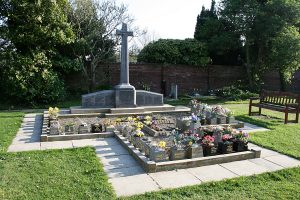
 children’s playground were opened in August 1945, in memory of those lost, the money for the playground equipment having been raised by American airmen at the Warton airbase. A fund for a memorial hall was started, and the hall was finally opened in September 1977. Another memorial in the village churchyard was placed at the accident site in 2007. The plane that had come to signify protection for the area people, in the end spelled friendly disaster.
children’s playground were opened in August 1945, in memory of those lost, the money for the playground equipment having been raised by American airmen at the Warton airbase. A fund for a memorial hall was started, and the hall was finally opened in September 1977. Another memorial in the village churchyard was placed at the accident site in 2007. The plane that had come to signify protection for the area people, in the end spelled friendly disaster.

